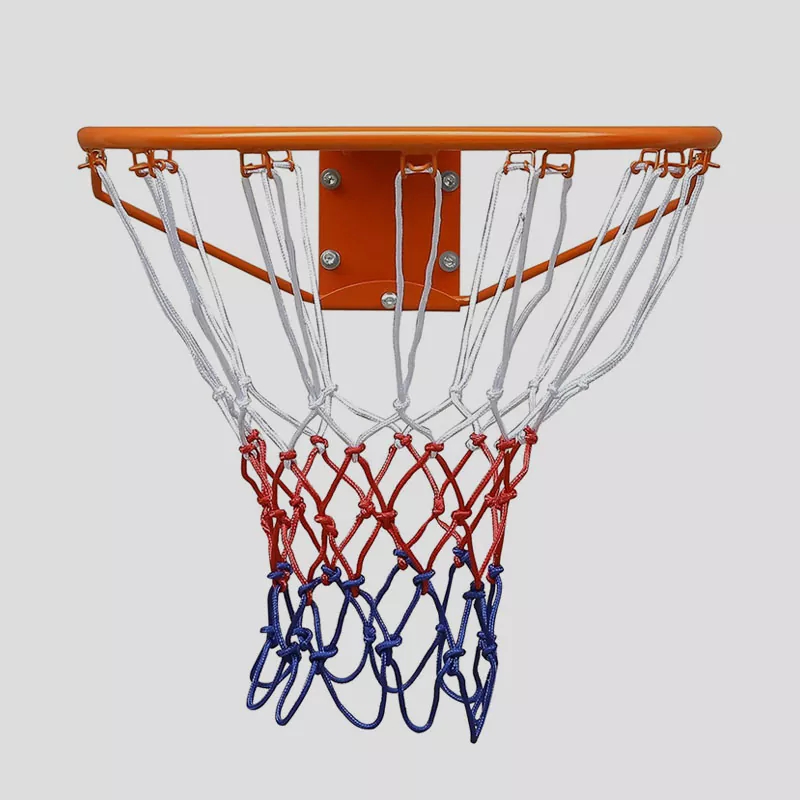Types of Basketball Hoops
2024-06-05
Basketball hoops are essential components of the game of basketball, consisting of a hoop (rim), net, backboard, and a support system. They come in various designs and configurations suitable for different settings, including indoor and outdoor use, professional and recreational play. Here’s a detailed look at basketball hoops:
Key Components:
1. Rim:
- Material: Usually made of solid steel with a diameter of 18 inches.
- Design: Can be standard (rigid) or breakaway, where the rim has a spring mechanism to handle the impact of dunks and reduce the risk of injury.
2. Net:
- Material: Typically made from nylon, polyester, or chain. Nylon nets are common for indoor use, while chain nets are often used for outdoor hoops.
- Function: Helps to visualize the ball going through the hoop and can reduce the ball’s speed after scoring.
3. Backboard:
- Material: Can be made from tempered glass, acrylic, polycarbonate, or plastic.
- Size: The standard size for a professional basketball backboard is 72 inches wide and 42 inches tall.
- Design: Rectangular or fan-shaped. Rectangular backboards are more common and are used in professional and competitive play.
4. Support System:
- Types: Includes wall-mounted, in-ground, and portable systems.
- Stability: In-ground systems are the most stable, portable hoops offer flexibility and mobility, while wall-mounted hoops save space.
Types of Basketball Hoops:
1. Portable Basketball Hoops:
- Base: Filled with sand or water to provide stability.
- Adjustability: Often feature height adjustment mechanisms, allowing the rim height to be changed from the standard 10 feet to lower heights suitable for children.
- Mobility: Equipped with wheels for easy movement and storage.
2. In-Ground Basketball Hoops:
- Installation: Requires a more permanent installation, often involving concrete to secure the pole in place.
- Stability: Offers superior stability and durability, making them ideal for serious players and outdoor courts.
- Adjustability: Many in-ground hoops also have height adjustment mechanisms.
3. Wall-Mounted Basketball Hoops:
- Space-Saving: Ideal for areas with limited space as they attach directly to a wall or garage.
- Installation: Requires a sturdy wall for mounting, and the installation is more permanent compared to portable hoops.
- Height: Some models allow for height adjustments.
Advantages of Each Type:
1. Portable Hoops:
- Flexibility: Can be moved and stored as needed.
- Easy Setup: Simple installation process without the need for permanent fixtures.
2. In-Ground Hoops:
- Stability: Provides a stable and professional feel, ideal for competitive play.
- Durability: Built to withstand various weather conditions and long-term use.
3. Wall-Mounted Hoops:
- Space Efficiency: Does not take up ground space, ideal for smaller areas.
- Durability: Fixed installation ensures stability and durability.
Choosing the Right Basketball Hoop:
1. Purpose and Usage:
- Recreational Play: Portable hoops are often sufficient for casual play and are great for families with children.
- Competitive Play: In-ground hoops are best for serious players looking for a stable and professional setup.
- Limited Space: Wall-mounted hoops are ideal for areas with limited space or for indoor use in garages or gymnasiums.
2. Budget:
- Portable Hoops: Generally more affordable and offer great value for money.
- In-Ground Hoops: Can be more expensive due to the need for installation and more durable materials.
- Wall-Mounted Hoops: Price varies depending on the complexity and material of the system.
3. Durability:
- Outdoor Use: Consider weather-resistant materials such as powder-coated steel for poles and durable backboard materials like polycarbonate or tempered glass.
- Indoor Use: Tempered glass backboards offer the best performance and are common in indoor gymnasiums.
Installation and Maintenance:
1. Installation:
- Follow Instructions: Ensure to follow the manufacturer’s instructions carefully, especially for in-ground and wall-mounted systems.
- Professional Help: Consider professional installation for in-ground systems to ensure stability and safety.
2. Maintenance:
- Regular Inspection: Check for rust, loose bolts, and wear and tear on the net and backboard.
- Cleaning: Clean the backboard regularly to maintain visibility and aesthetic appeal.
- Net Replacement: Replace the net periodically, especially if it shows signs of wear or damage.
Popular Brands and Models:
1. Spalding:
- Known for high-quality, durable basketball systems, including those used in the NBA.
- Offers a range of models suitable for different levels of play.
2. Lifetime:
- Provides affordable and durable basketball hoops, particularly popular for residential use.
- Offers a variety of portable and in-ground options.
3. Goalrilla:
- Known for high-performance, professional-grade in-ground hoops.
- Focuses on stability, durability, and high-quality materials.
Choosing the right basketball hoop depends on your specific needs, space, and budget. Whether for casual backyard play or serious competitive practice, there’s a basketball hoop designed to meet your requirements.



